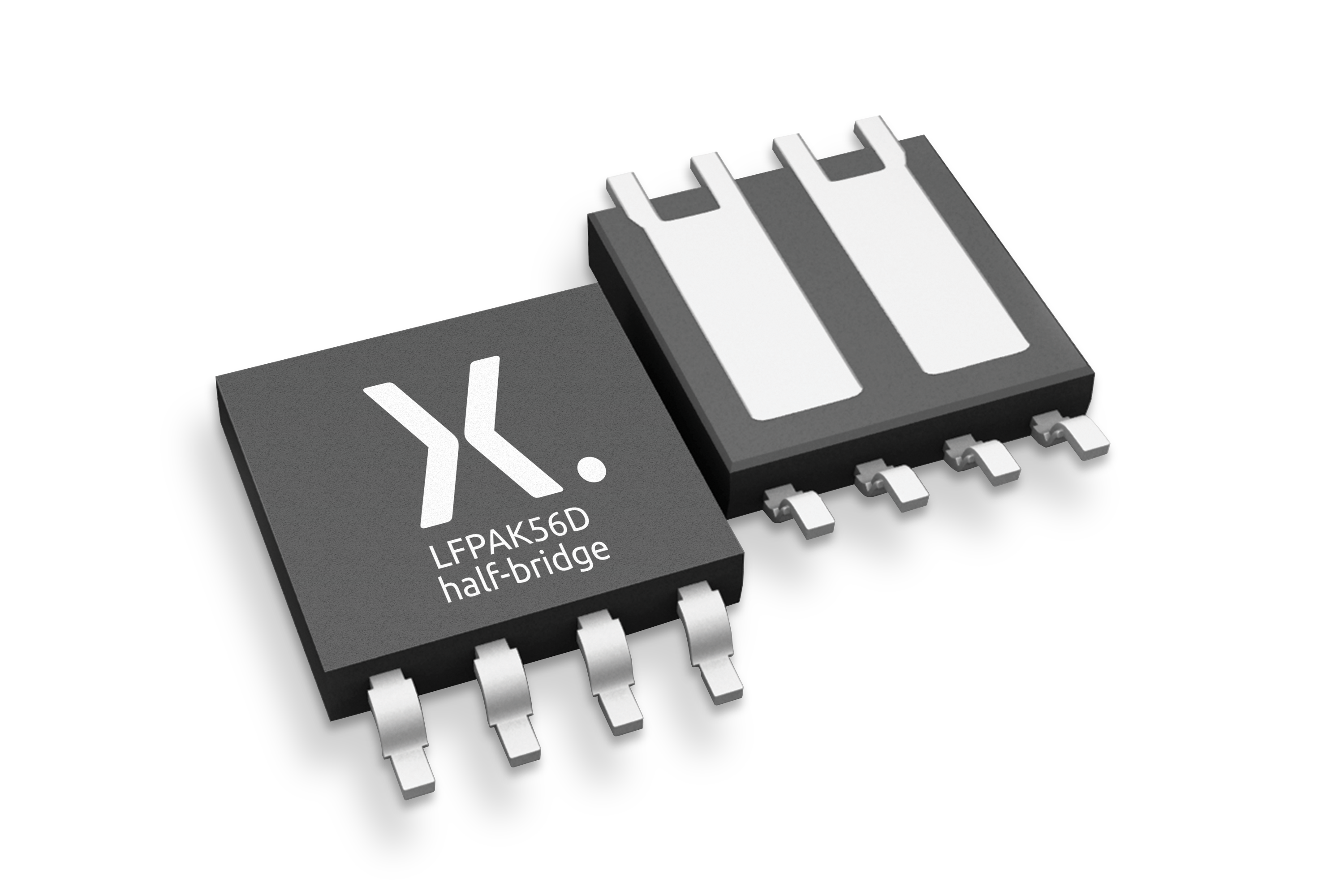The efficiency of power conversion and motor control applications is an ever-green design specification for an increasing variety of automotive applications. Modern internal combustion-engine vehicles use an increasing number of low voltage 3-phase motor control systems, including fuel pumps, seating adjustment motors, and air-conditioning motors. MOSFETs and their power conversion efficiency directly influence many design factors, such as how cool a motor drive circuit operates and the amount of waste heat dissipated. The efficiency depends on several critical switching component attributes within MOSFETs such as the 'on resistance', peak switching current and thermal efficiency.
The popular half-bridge MOSFET configuration
A half-bridge configuration of two MOSFETs is a popular building-block approach for automotive 3-phase motor drive applications. Alongside the technical specifications, the automotive industry, like many others, has other equally important requirements. As the number of electronics-based systems increases, the available space reduces, placing pressure on component footprint and PCB space.

Application fit: half-bridge is a common building block for automotive applications
Shrinking device footprints with a space-saving package
The physical board layout of MOSFETs in a half-bridge configuration requires meticulous design. The demand within automotive systems to reduce module size has led design engineers to adopt smaller, more power-dense packages. With this demand to reduce module size, system level efficiency and system level inductance become important considerations, with additional tracks on the board impacting board level inductance.
The LFPAK56D space-saving package, developed by Nexperia and fully compatible with the industry's dual Power-SO8 semiconductor footprint, is an example of how semiconductor vendors bring innovation to space-constrained designs. The LFPAK56D Dual package introduced by Nexperia is optimized for engine management applications, the two MOSFETs are typically used as separate channels. For example, a fuel injector or exhaust gas recirculation (EGR) valve.
Lowering overall system inductances
For applications that require the MOSFETS arranged in a half-bridge configuration, we have now introduced a series of two LFPAK56D half-bridge devices. A key innovation inside the package, connecting the source of the high-side and the drain of the low-side MOSFETs. This connection significantly reduces the parasitic inductance by 60 % compared to the LFPAK56D dual package, to further support reductions in system level inductance for both motor control and DCDC topologies.

Automotive half-bridge MOSFETs in LFPAK56D (dual Power-SO8) package
Both products are qualified to AEC-Q101 standards and bring the additional benefits synonymous with our copper-clip LFPAK package technology such as increased board level reliability, superior electrical and thermal performance, and ease of manufacturability with optical inspection of solder joints and wave solderability.
For more information including product datasheets visit nexperia.com/lfpak56d-half-bridge
Quick Learning: What is LFPAK56D half-bridge